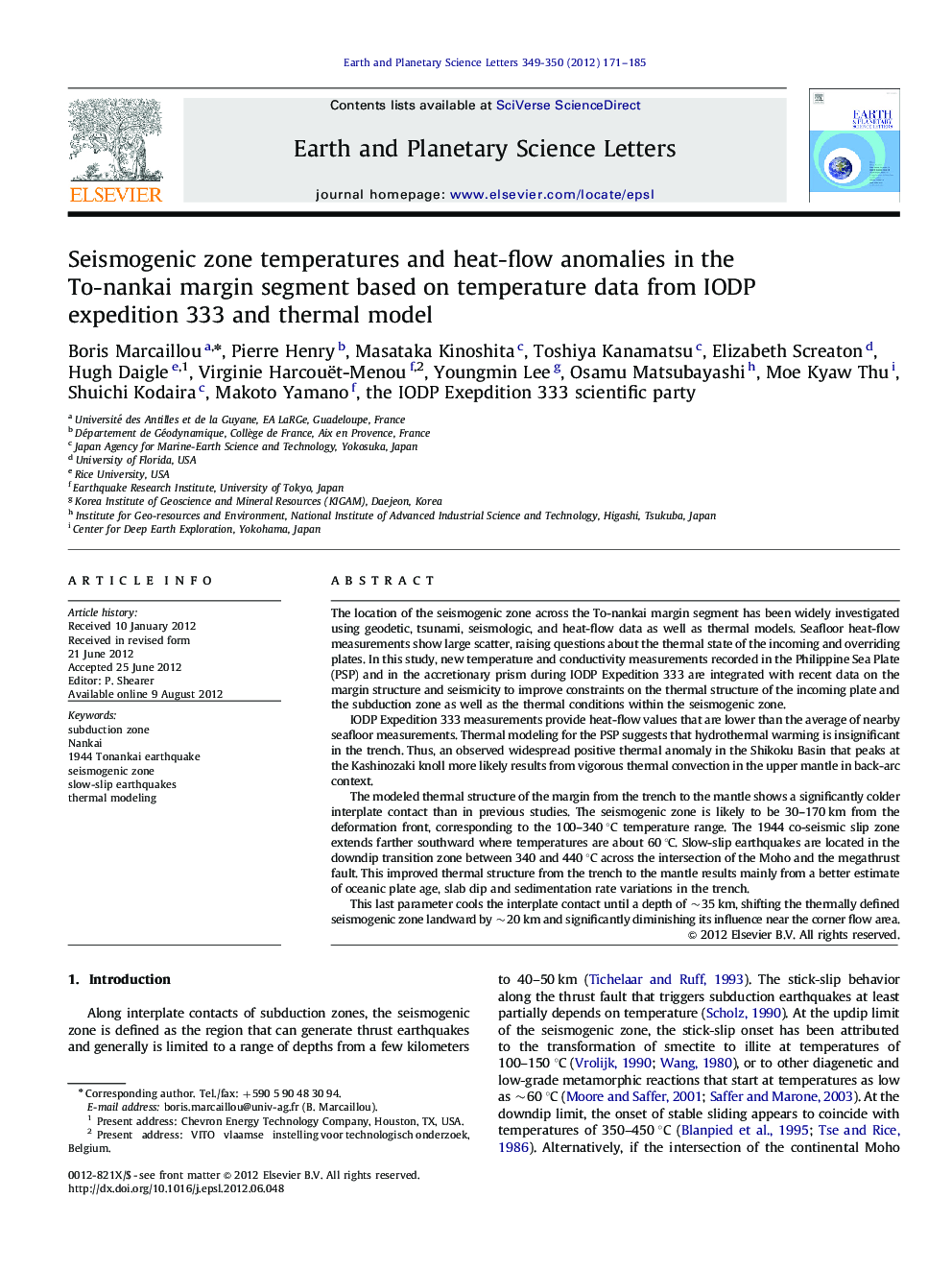| کد مقاله | کد نشریه | سال انتشار | مقاله انگلیسی | نسخه تمام متن |
|---|---|---|---|---|
| 4677406 | 1634798 | 2012 | 15 صفحه PDF | دانلود رایگان |

The location of the seismogenic zone across the To-nankai margin segment has been widely investigated using geodetic, tsunami, seismologic, and heat-flow data as well as thermal models. Seafloor heat-flow measurements show large scatter, raising questions about the thermal state of the incoming and overriding plates. In this study, new temperature and conductivity measurements recorded in the Philippine Sea Plate (PSP) and in the accretionary prism during IODP Expedition 333 are integrated with recent data on the margin structure and seismicity to improve constraints on the thermal structure of the incoming plate and the subduction zone as well as the thermal conditions within the seismogenic zone.IODP Expedition 333 measurements provide heat-flow values that are lower than the average of nearby seafloor measurements. Thermal modeling for the PSP suggests that hydrothermal warming is insignificant in the trench. Thus, an observed widespread positive thermal anomaly in the Shikoku Basin that peaks at the Kashinozaki knoll more likely results from vigorous thermal convection in the upper mantle in back-arc context.The modeled thermal structure of the margin from the trench to the mantle shows a significantly colder interplate contact than in previous studies. The seismogenic zone is likely to be 30–170 km from the deformation front, corresponding to the 100–340 °C temperature range. The 1944 co-seismic slip zone extends farther southward where temperatures are about 60 °C. Slow-slip earthquakes are located in the downdip transition zone between 340 and 440 °C across the intersection of the Moho and the megathrust fault. This improved thermal structure from the trench to the mantle results mainly from a better estimate of oceanic plate age, slab dip and sedimentation rate variations in the trench.This last parameter cools the interplate contact until a depth of ∼35 km, shifting the thermally defined seismogenic zone landward by ∼20 km and significantly diminishing its influence near the corner flow area.
► The updip limit of the seismogenic zone corresponds with temperature of ∼100 °C.
► The thermally-defined seismogenic zone (100 °C –350 °C) is wider and shallower than previously thought.
► Newly acquired heat-flow data within the Philippine Sea Plate constrain the oceanic geotherm.
► Hydrothermal warming in the trench from upward fluid flux is unlikely.
Journal: Earth and Planetary Science Letters - Volumes 349–350, 1 October 2012, Pages 171–185